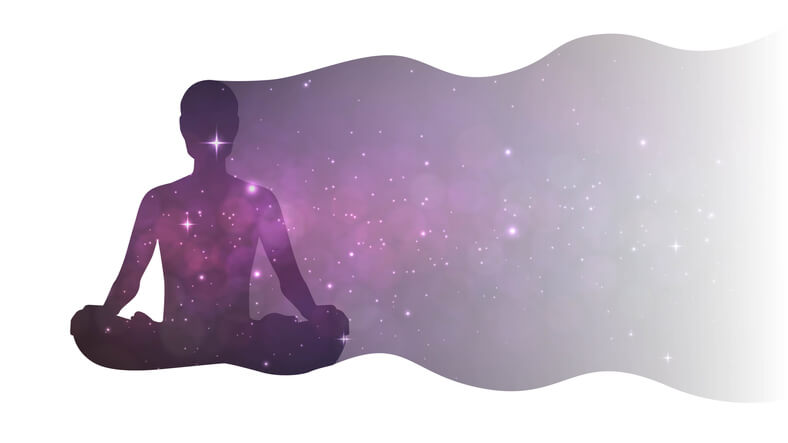There seems to be a bit of confusion in the yoga world about Kapalbhati and Bhastrika. Let us clear that up here.
Words like these evoke images of dragons. If you are not that familiar with the practice, you may think that you will be exhaling flames from your nostrils, or perhaps shining some lights on your forehead!
Although these may be great visuals for a children’s yoga class, I assure you this is not what happens during these pranayama practices. (Learn more in Q&A with Pranayama Expert Richard Rosen.)
What will actually happen is a cleansing, a toning, as well as allowing energy to flow and circulate in the entire body. I use these breath practices whenever my monkey mind takes over. It helps to still my mind and feel my body.
What is Kapalbhati?
It is referred to as the breath of fire, kapalbhati consists of a rhythmic inhalation and exhalation, practiced in equal proportion.
The main purpose of this type of breath is to boost blood circulation and to cleanse the digestive system.
There is some confusion out there on what kapalbhati is and what is bhastrika pranayama as they are very similar practices. It helps to remember the emphasis in kapalbhati breath is on the exhale, and in bhastrika the emphasis is on both the inhale and exhale.
Kapalbhati comes from the Sanskrit "kapala" meaning skull and "bhati" meaning "shining," which together means shining skull or a cleansing of the head that will develop a glow. (Learn more in Better Than Coffee: Drink in the Benefits of This Yogic Brain-Boosting Cleansing Technique)

The Hatha Yoga Pradipika mentions that this breath is meant to cleanse the respiratory system. In fact, the Pradipika does not refer to it as a breath, but rather as a cleanse.
The cleansing actions in the Hatha Yoga Pradipika are: Dhauti, Basti, Neti, Trâtaka, Nauli, and Kapâla Bhâti.
What is Bhastrika?
Bhastrika means 'bellows' and it helps to bring balance to the energies of the body.
Both the inhalation and exhalation are emphasized in bhastrika. The practice requires powerful, rapid inhales and exhales that make an audible sound. The process is repeated 32 times.
Bhastrika is the more advanced of the two breaths, so if called to practice this type of breath it is wise to begin with kapalbhati.
Top 5 Reasons to Practice Kapalbhati and Bhastrika
- It is a great way to clear the mind, increase energy flow in the physical and subtle bodies, detoxify, and strengthen and clear the respiratory system.
- During such pranayama, there is an increase of oxygen in the blood and the metabolism rises, thus supporting detoxification.
- The rapid use of the diaphragm helps massage the organs around it.
- Kapalbhati and Bhastrika can help get your creative juices flowing, if you are feeling stuck, and will can help you to focus better on whatever project you have on your hands. (Learn more in Just Breathe: 4 Yogic Breathing Techniques That Will Really Relax You.)
- These breaths help relax the nervous system and prepare the body for meditation.
How to Practice Bhastrika
Begin by sitting comfortably, palms on the knees, spine tall. Relax the body as much as possible, releasing any tension or holding.
Take a few deep breaths really filling the lungs to their entire capacity and emptying them out.

Start inhaling and exhaling rapidly with equal proportions on the inhale and exhale.
Keep the breath connected for anywhere from a minute to five minutes, or more depending on how long you have been practicing. If you are a beginner, begin with a slower breath rate.
This breath requires a constriction of the glottis while the mouth is closed, so it is similar to an ujjayi breath in that you must feel the air in the throat as you breath it in and out of the nostrils.
Make sure the belly is going towards the spine as you exhale and moving outwards on the inhale. You need to place emphasis on both the inhale and the exhale for bhastrika.
It is a good draft to place the hands on the belly, if you are a beginner, to ensure that the belly is moving correctly. (Learn more in Dirgha Pranayama: An Introduction to Three-Part Breath.)
When to Practice
It is not advisable to practice this breath if you have certain health conditions, such as high blood pressure, if you are menstruating or pregnant.
Additionally, since this is a fire producing practice, it is not recommended for when you are under a lot of stress, as stress naturally introduces more fire into your system.
During These Times of Stress and Uncertainty Your Doshas May Be Unbalanced.
To help you bring attention to your doshas and to identify what your predominant dosha is, we created the following quiz.
Try not to stress over every question, but simply answer based off your intuition. After all, you know yourself better than anyone else.